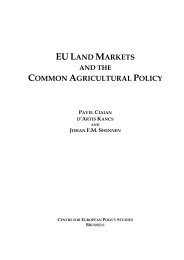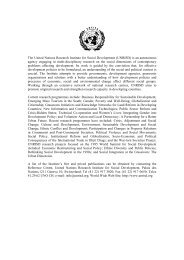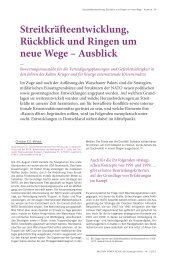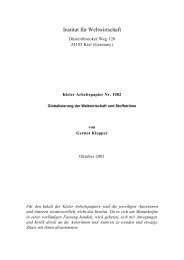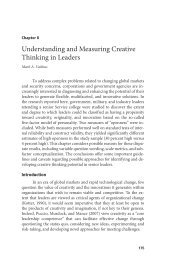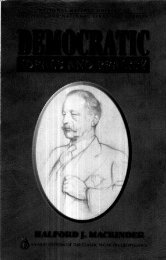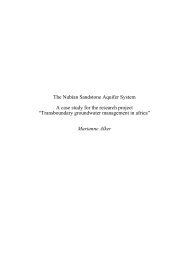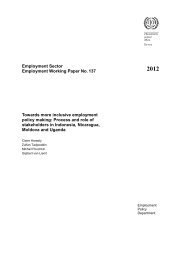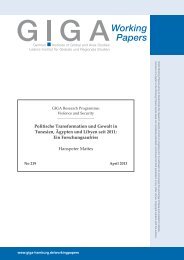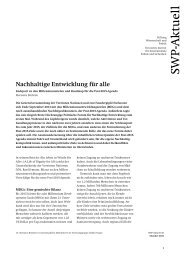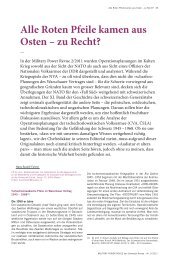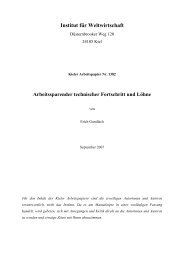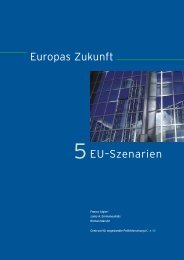Global Jihad: temi, piste di diffusione e il fenomeno del reducismo ...
Global Jihad: temi, piste di diffusione e il fenomeno del reducismo ...
Global Jihad: temi, piste di diffusione e il fenomeno del reducismo ...
Create successful ePaper yourself
Turn your PDF publications into a flip-book with our unique Google optimized e-Paper software.
accident occurred in Goiânia, Braz<strong>il</strong> in September 1987, when a high activity source,<br />
Caesium-137 132 , was inadvertently removed from a therapy unit and <strong>di</strong>smantled by<br />
scrap dealers. It was found that 249 people were contaminated. Of the 249<br />
contaminees, 21 presented acute ra<strong>di</strong>ation syndrome, ten of which were in a serious<br />
con<strong>di</strong>tion. Four of these <strong>di</strong>ed. It has been argued that overall, the accident affected all<br />
inhabitants of the city, either <strong>di</strong>rectly or in<strong>di</strong>rectly, and the Goiás State as a whole, in<br />
terms of social, emotional, economic, psychological, and health-related issues. Clean-<br />
up operations took over a month, which is the minimum time, and the waste<br />
removed from the contaminated sites was not <strong>di</strong>sposed of unt<strong>il</strong> 1991. 133 The Goiânia<br />
incident shows that a ra<strong>di</strong>ological event in an urban setting can have devastating<br />
consequences, and also that each incident w<strong>il</strong>l be unique to the setting within which<br />
it occurs.<br />
The effects of a ra<strong>di</strong>ological weapon are more <strong>di</strong>fficult to pre<strong>di</strong>ct than the effects of a<br />
nuclear explosion. Environmental con<strong>di</strong>tions, such as temperature, time of day,<br />
relative humi<strong>di</strong>ty and wind con<strong>di</strong>tions all affect the size of the affected area. The type<br />
of material and method of <strong>di</strong>spersion also affects the size of the contaminated area<br />
and the level of <strong>di</strong>spersed ra<strong>di</strong>oactivity. Even low levels of contamination could have<br />
a severe impact<br />
on an urban population.<br />
RDDs may be made with any ra<strong>di</strong>oactive material,<br />
although the level of effects<br />
depends upon the level of ra<strong>di</strong>oactivity of the material<br />
used. Suitable ra<strong>di</strong>oactive<br />
materials vary wi<strong>del</strong>y from relatively weak sources,<br />
such as Strontium 90, to high<br />
levels of ra<strong>di</strong>oactivity such as that possessed by the fissionable materials plutonium<br />
and uranium. An RDD is therefore a very flexible weapon. This type of weapon can<br />
have a wide range of effects from creating a panic situation based on fear of<br />
ra<strong>di</strong>ation, a general denial of territory due to local contamination, the murder of a<br />
specific in<strong>di</strong>vidual(s), to creating a mass casualty event. 134<br />
132 50.9 TBq 137C<br />
133 For a more in-depth account of the accident, see: Vinhas, L.A., ‘Overview of the Ra<strong>di</strong>ological Accident in<br />
Goiânia’, Security of Ra<strong>di</strong>oactive Sources, Procee<strong>di</strong>ngs of an international conference, 10-13 March 2003 (IAEA), pp.347-<br />
355<br />
134 Nichelson, S.M. & Medlin, D.D., ‘Ra<strong>di</strong>ological Weapons of Terror’, Apr<strong>il</strong> 1999<br />
213



